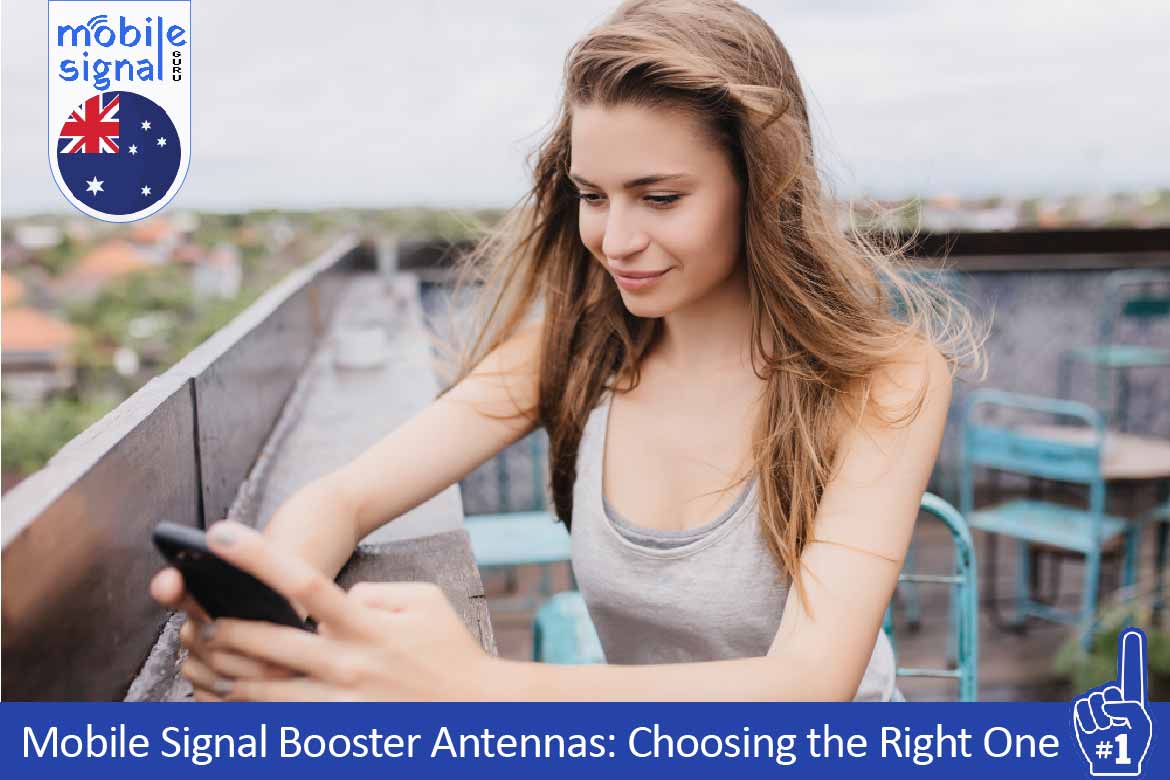Mobile signal boosters are vital for improving signal reception in areas where coverage is weak. To maximize their efficiency, choosing the right mobile signal booster antennas is key. In Australia, a country with vast rural areas and urban centers, selecting the right mobile signal booster antennas can make a significant difference in call quality, data speed, and overall mobile performance. This guide explains how to choose the ideal mobile signal booster antenna for your needs, ensuring consistent and strong reception.
Types of Mobile Signal Booster Antennas
There are primarily two types of mobile signal boosters antennas used in mobile signal boosters: external and internal antennas. Understanding their functions and differences is essential for making an informed choice.
1. External Antennas
External antennas are installed outside your home or building. These antennas capture the weak signal from the nearest cell tower. In Australia, where signal strength can vary significantly depending on your location, external antennas are critical for improving mobile reception in rural and urban areas alike. Here are the common types of external antennas:
- Yagi Antenna: A Yagi antenna is a directional antenna, meaning it needs to be pointed toward the nearest cell tower. It is perfect for rural areas where the signal comes from a specific direction and cell towers may be far away. With its high gain, it efficiently captures distant signals, making it ideal for boosting mobile signals in remote parts of Australia.
- Log Periodic Dipole Array (LPDA): LPDA antennas are versatile and effective for various frequency bands. They are particularly good at handling multiple frequencies, which is beneficial for modern mobile networks. LPDA antennas can capture signals from different directions while maintaining a good level of gain. They are great for both urban and rural setups, offering a balance between directionality and multi-band capability.
-
Omni-Directional Antenna: Omni-directional antennas capture signals from all directions, making them ideal for urban areas where signals may come from multiple towers. However, they have a lower gain than Yagi antennas, which means they are not as effective in rural areas but work well when multiple sources of signal are nearby.
2. Internal Antennas
Internal antennas distribute the boosted signal throughout your home or building. The strength and type of internal antenna you choose will determine how far the boosted signal can reach indoors. Two common internal antennas include:
- Panel Antenna: Panel antennas are directional and typically mounted on walls to direct the signal in one direction. This type of antenna is useful in larger homes or offices, where the signal needs to be focused on a specific area.
-
Dome Antenna: Dome antennas (ceiling antenna) are omnidirectional and are generally mounted on ceilings. They are effective in smaller spaces, distributing the signal in all directions and ensuring uniform coverage in rooms and areas directly beneath them.
Factors to Consider When Choosing the Right Mobile Signal Booster Antenna
Selecting the right mobile signal booster antennas involves considering various factors, such as location, signal strength, and your unique requirements.
1. Location and Signal Strength
In Australia, signal strength can vary significantly depending on whether you are in a major city, a suburban area, or a rural region. In rural areas where signals are weak, a LPDA antenna may be the best choice, as it offers high gain and can pick up distant signals. However, in urban areas where signals are generally stronger, an omni-directional external antenna may suffice, as it captures signals from multiple towers.
2. Frequency Compatibility
Australia uses various frequencies for different carriers and networks. It is crucial to ensure that the antenna you choose is compatible with the frequencies used by your mobile carrier (such as Telstra, Optus, or Vodafone). Always verify the frequency band your phone operates on and select an antenna that supports those frequencies for optimal performance.
3. Antenna Gain
Gain refers to the antenna’s ability to capture and boost signal strength. Measured in decibels (dB), a higher gain means better signal capture. In rural areas where signals are weaker, a higher-gain Yagi antenna (up to 12 dB) is recommended. However, for urban settings with stronger signals, a lower-gain omni-directional antenna (2-5 dB) should suffice.
4. Installation and Placement
The placement of your antenna plays a significant role in its performance. An external antenna must be placed as high as possible (e.g., on a roof) to ensure maximum signal capture. It should also be clear of obstructions such as trees, buildings, and hills, which can interfere with signal reception. In contrast, internal antennas should be positioned strategically inside the home to cover the desired areas efficiently.
Conclusion
Choosing the right mobile signal booster antennas in Australia depends on your location, the strength of the existing signal, and your specific requirements. Yagi antennas work best in rural areas with weak signals, while omni-directional antennas are ideal for urban settings. Always ensure that your antenna is compatible with your carrier’s frequencies and that it offers the right gain for your location. Proper installation and placement are essential for maximizing the performance of your mobile signal booster and ensuring reliable signal coverage throughout your home or building.
 Denmark (DKK)
Denmark (DKK) France (EUR)
France (EUR) Germany (EUR)
Germany (EUR) Ireland (EUR)
Ireland (EUR) Malta (EUR)
Malta (EUR) Netherlands (EUR)
Netherlands (EUR) New Zealand (NZD)
New Zealand (NZD) Norway (NOK)
Norway (NOK) Spain (EUR)
Spain (EUR) Sweden (SEK)
Sweden (SEK) UAE (AED)
UAE (AED) United Kingdom (GBP)
United Kingdom (GBP) Global Site (USD)
Global Site (USD)
